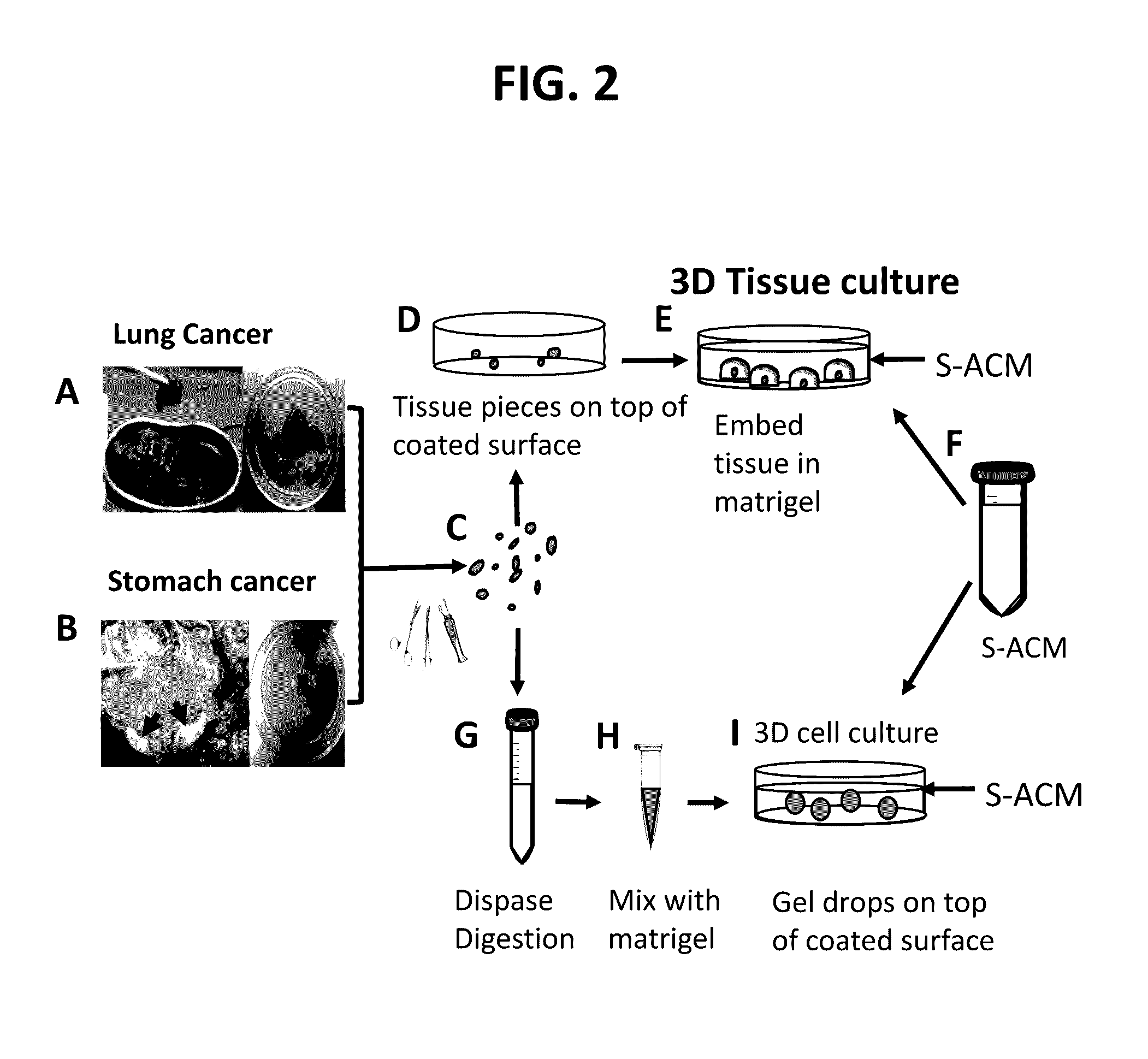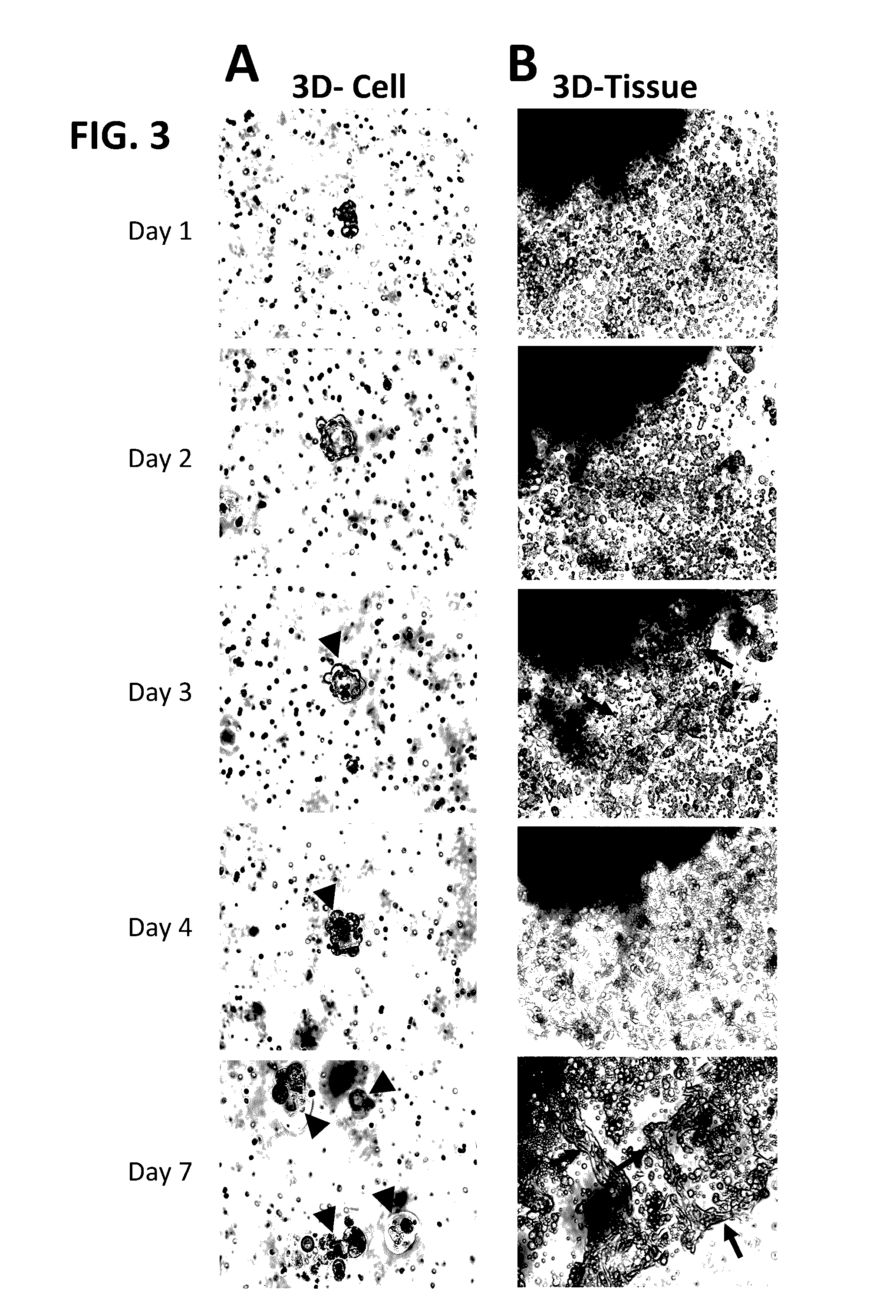Methods of primary tissue culture and drug screening using autologous serum and fluids
a primary tissue culture and autologous technology, applied in the field of cell biology and medicine, can solve the problems of death or biological alterations, complex selection of a cancer therapy for an individual, and inability to closely represent the conditions of the patient's artificial microenvironment, so as to improve the effectiveness of individualized cancer therapy, improve the success rate of primary culture, and improve the effect of drug sensitivity testing
- Summary
- Abstract
- Description
- Claims
- Application Information
AI Technical Summary
Benefits of technology
Problems solved by technology
Method used
Image
Examples
example 1
Materials and Methods
Clinical Samples Information:
[0215]All clinical materials were collected from Dalian Central Hospital, Dalian, China, during 2014 and 2015. This study was approved and monitored under the hospital Humane Society and Research Committee (YN2014-023-01). Primary cultures were performed for fourteen solid tumors and thirteen serous tumors (malignant ascites and pleural effusions). The solid tumors were from seven male and seven female patients whose ages ranged from 40 to 80, with an average of 61. These patients were diagnosed clinically as stomach cancers (n=6), lung cancers (n=7), and lymph node metastatic cancer from a stomach cancer patient (n=1). For the lymph node metastatic cancer from a stomach cancer patient an enlarged lymph node (LN; 2.5×1×1 cm3) was used. Pathology confirmed that the enlargement of this LN was caused by cancer metastasis. All these cases were confirmed as cancers by histopathology (Table 1). For serous tumors, samples were collected fro...
PUM
| Property | Measurement | Unit |
|---|---|---|
| v/v | aaaaa | aaaaa |
| thickness | aaaaa | aaaaa |
| time | aaaaa | aaaaa |
Abstract
Description
Claims
Application Information
 Login to View More
Login to View More - R&D
- Intellectual Property
- Life Sciences
- Materials
- Tech Scout
- Unparalleled Data Quality
- Higher Quality Content
- 60% Fewer Hallucinations
Browse by: Latest US Patents, China's latest patents, Technical Efficacy Thesaurus, Application Domain, Technology Topic, Popular Technical Reports.
© 2025 PatSnap. All rights reserved.Legal|Privacy policy|Modern Slavery Act Transparency Statement|Sitemap|About US| Contact US: help@patsnap.com



